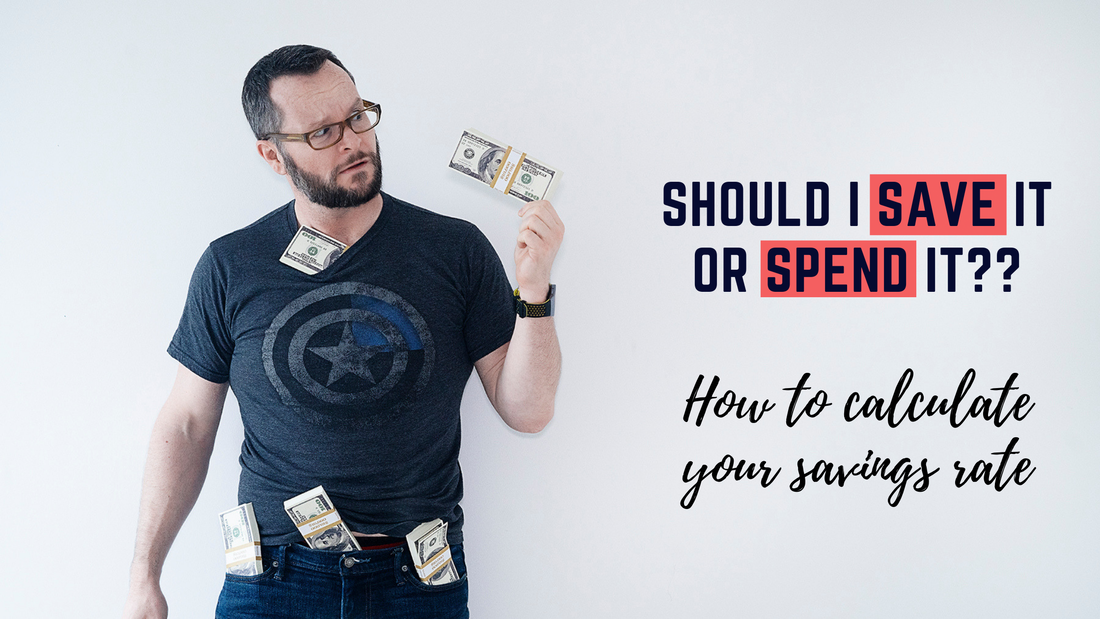|
Back to Blog
How do I calculate my savings rate?12/6/2023
Your savings rate is one of the key indicators of when you can retire and how good your finances are! Knowing this number you can predict how long you have to work in paid employment.
Created 11th August 2020. Updated 31/05/22. Updated 19/06/22. Updated 12/06/23 Saving versus investing
Last year on Rebel Finance School there was lots of confusion over savings rate what you are doing with the money. If you are saving £100 a month towards a holiday or Christmas presents then surely that is savings?
Yes technically it is saving but you are just saving for future spending not investing or building wealth by buy assets. Saving for a holiday is not going to sort you out financially, it is just going to pay for a holiday. We have redesigned our tracker, our language and the course to make this distinction. The thing you should be interested in is how much of your money are you investing rather than saving. Are you actually building wealth with your savings or just saving to spend? What we are really interested in is your wealth-building rate.; not your savings rate. Why should I bother calculating my wealth-building rate?
If you save & invest 50% of your income each month then your working career will be 17 years! How do I know that?
Your wealth-building rate is actually far more important than the total amount of money you earn. Let’s compare two different individuals. The first is a well-paid executive that earns £200,000 a year. They have a lavish lifestyle with lots of holidays and nice cars. This executive invests £20,000 a year. The second individual is a builder. They earn £20,000 a year working on a building site. They have a modest lifestyle and live within their means, investing £2,000 a year. Who can retire earliest? How long are their working careers? The obvious answer would be the executive because they are saving more each year. They are actually saving ten times as much as the builder. However they have a very expensive lifestyle and need far more money to retire than the builder ever would. The answer is that they would have the same predicted retirement date. This is because they are both investing 10% of their income. If we assume that they will spend the same amount in retirement as they do whilst working we can accurately predict when they are able to retire!! If you know your percentage wealth-building rate you can predict how many years you have to work. How do you actually calculate your wealth-building rate?
Each month you earn a certain amount of money after tax. Most people spend everything they earn! However if you keep some of that money and put it into investments then you have a wealth-building rate.
As an example let’s say you earned £3,000 in a month. If you took £300 of that money and put it into investments you would have a 10% wealth-building rate. If you took £1,000 of that money and put it into investments you would have a 33% wealth-building rate. If you took £1500 of that savings rate and put it into investments you would have a 50% wealth-building rate! Let's say you wanted to work out your savings rate for April. You need two numbers to be able to do this. A) How much you earned in April B) How much you spent in April. Then you compare how much you earned (this is after tax by the way) and how much you spent to give a percentage of how much you kept/saved. For example, if you earned £1000 and spent £800 then you saved £200 and your wealth-building rate is 20% (200/1000). In this example you are using 20% of what you earned to buy freedom. IMPORTANT! We coached someone last year and he was very despondent because he thought his savings rate was zero. He was putting £200 a month to buy investments and counting this as spending. Any money you use to buy assets is NOT spending. Do not include this in your spending figure. Any money you use to save for future spending (e.g. holidays, car etc.) is spending for this month. You can either include this as spending each month or wait till you spend it on the holiday and put it in your figures in one go. Monthly fluctuations
Your wealth-building rate might change on a month-to-month basis. Katie and I used to calculate each month how much of our earnings were invested. Then over the year we could calculate an average.
One reason for the monthly fluctuations is down to your spending. Some months you might have more expenditure buying things like glasses or medical bills. Some months you might have lower expenditure and be able to save more. Your percentage savings rate will change with your spending. The other reason for your savings rate changing is fluctuations in your earnings. If you're self-employed or a company director you probably have uneven income each month. There might be months where you have a negative savings rate because you didn't earn as much and other months where you have close to a 90% savings rate because you had a very good month in your business. In this case once you have a few months of tracking your savings rate you can start to average out over the last quarter, 6 months or year. Katie and I recommend using a tool like money dashboard (UK), mint (USA) or personal capital (USA) to track your spending each month and to calculate your savings rate. We then treated it as a game to see if we could continually improve our savings rate and put more of our money into our investments. We were prioritising buying our freedom over buying extra stuff. Help is at hand – free template
Katie has been working hard creating a template to help you track your wealth-building rate! She has build a spreadsheet for you to use to make this easy.
The better informed you are about your spending, where your money is going and how much you are investing for your retirement the better able you are to plan for a bright financial future!
Saving for .............
During the 2022 Rebel Finance School there was a lot of confusion over saving for Christmas, birthday presents or the next car and how to calculate for that in the spreadsheet. is it savings? I am after-all saving for something!
The way the Donegans look at this is that these types of savings are for future spending. Or as Wendy, Derek and Claudia from the Rebel Facebook group so rightly pointed out it is budgeting not saving. You are setting aside money / budgeting for a future purchase. This isn't saving for your financial future, for investing, for your retirement, it is a different thing. For example you decide that you are going to save £50 a month towards Christmas so it doesn't come as a shock and you have to buy all the food and presents when it happens. This is brilliant budgeting. We LOVE IT. Come Christmas what happens to all that money you have "saved"? It gets spent in one foul swoop. Gone. Disappeared. Enjoyed. Blown. Gifted. It can't really be counted in your wealth-building rate as you are planning on spending it. Katie has created a new version of the tracker for this year that now focuses on wealth-building rate. It takes the money you are using for investments to show the percentage and ignores money you are saving for future spending. Take action
Sometimes a goal like reaching financial independence can seem so far off that it puts people off starting! This happens so often that I wrote a whole article about it called the Insurmountable Mountain!
What people don't realise is that creating an exceptional life starts with the smallest of actions. making a call, sending an email, tracking your spending. These small daily actions compound over time to build the life of your dreams. All you need to do is start today and take action. Download the spreadsheet, work out your savings rate and discuss it with a friend, your partner or your cat. Take action each and every day and you will be AMAZED at how far you got in a year. Do something today that future you will be proud of! How to get involved?
You may have noticed Katie and I have got very creative recently and are producing more and more content to support you.
Katie and I wish you a wealthy, healthy and happy future.
|
|||||||||||||||||
DONEGAN |
We built this website to share our stories, the adventures, the amazing people and all the life lessons we've learned along the way!
SIGN UP to our mailing list
|

 RSS Feed
RSS Feed

